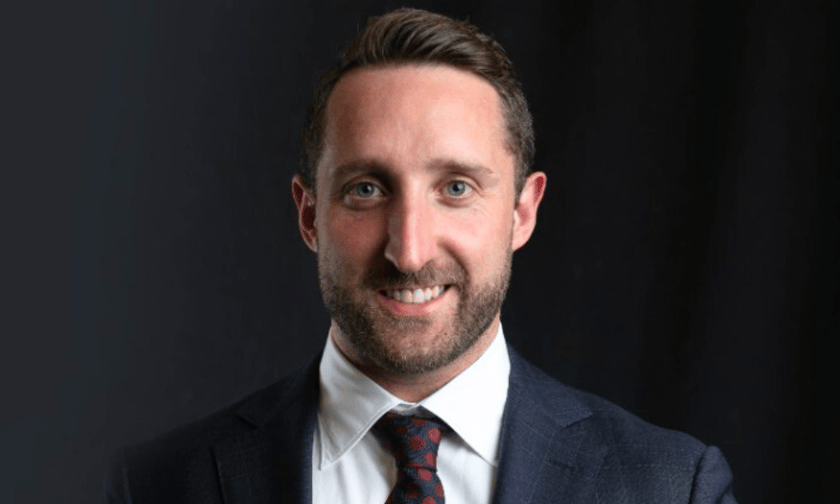

A private banker has debunked some of the misconceptions brokers have about private banking and outlined some of the lucrative partnership opportunities they can pursue in 2024.
Luke Hanlon (pictured above), a private wealth executive of lending at Westpac, said having a relationship with a private banker can lead to both “significant time saving” and “great client lending outcomes” while adding additional value for clients.
However, he said many brokers were unaware or misinformed about the role private bankers play – especially in complex lending scenarios for high net-worth (HNW) clients.
“I have a small portfolio of clients I manage on an ongoing basis – however, most of my time is spent on new client acquisition, with an annual lending target of close to $100 million per year,” Hanlon said. “Upfront, a lot of this is assisting brokers with complex lending solutions that might not be available through the regular third-party channel.
“Private bankers are usually experienced lenders, supported by a dedicated credit team so we are able to provide solutions that are more based on the client’s experience, strength of income, and balance sheet.”
On a typical day, Hanlon spends his time assisting brokers with owner occupied property purchases, growing investment portfolios, refinances, restructuring and ongoing client management – often for HNW individuals.
“The majority of my business comes from brokers,” Hanlon said. “My past roles honed my networking and business development skills, both internally and externally. I now leverage those skills heavily with the broker channel, a crucial referral source responsible for 70% of loans.
“This collaboration fosters valuable, long-term client relationships where we consistently add significant value.”
Hanlon said there are several HNW policy niches that can be used for the right client, such as higher LVRs without LMI or additional servicing capacity.
However, he stressed that this must be for the “right client and scenario”.
“They typically have lending needs above $5 million so there is a level of net worth involved,” he said.
Given the complexity involved in these lending scenarios, Hanlon said he has been fortunate enough to develop relationships with some of the “best of brokers in the industry”.
These include Shore Financial’s Christian Stevens, Lending Loop’s Stephen Watson, and Azura’s Tom Hawley, and each of their respective teams, he outlined.
“While each of these brokers have different strengths and ways of doing things, they all understand how private bankers can help them and that it’s a partnership leading to better lending outcomes, better ongoing client service, and a differentiation via a value add,” Hanlon said.
While all that may sound great, many brokers may be wary about bringing clients directly to a bank.
Channel conflict is a growing issue within the industry, with banks often employing tactics to take back market share after years of growth of broker-originated loans.
Hanlon said he often hears that brokers fear being “cut out” - either of future lending transactions or the client relationship. However, he said this is “very much not the case”.
“Meetings completed are usually joint and the broker is kept informed throughout the application process and notified if the client has any new needs,” Hanlon said. “The client NPS and experience is also enhanced as they know they have a larger ‘team’ working for them.”
Hanlon said brokers don’t have to worry about channel conflict “at all” within the private channel, as his KPIs are not in any way impacted by whether the deal or client is broker originated or not.
“Brokers still receive the same commissions as a standard lending transaction but in some ways have a lot of the heavy lifting removed,” he said.
Whether it be marketing, client acquisition, or great credit and analytical skills, Hanlon said he has worked with many brokers with different strengths and weaknesses.
However, when navigating the scenario of HNW client, he said brokers need to sharpen their focus on two key areas: client deep dives and strategic partnerships.
“Once a client gets over a certain level of wealth, their circumstances become more complex and often require more time than the standard one property PAYG deal,” Hanlon said.
“It’s important for the broker to understand the full picture, and deep dive into the client’s background, financials, needs and goals, key risks, and what mitigants the client has that will help the deal, such as balance sheet or assets to be sold to clear debt.”
In terms of expectation setting, Hanlon said simple deals at this level can be done within two weeks.
“However, complex scenarios with multiple business ownerships and structures, clients with a lot of moving parts, and illiquid assets often require much more analysis and detail to get the right picture to present for approval,” he said.
“These applications require much more human touch, credit workshops, and thus it’s important to position to the client these timeframes given the amount of work to be completed,” Hanlon said.
“Private bankers ensure your deal has the best terms, and you still get the right experience with deal structure and advice, investment opportunities, and both the client and broker have that ongoing contact point for day-to-day service or loan maintenance.
“With the rise of technology, it’s even more important to have a relationship with clients and that ‘human touch’ which can be enhanced through using private banking services.”
